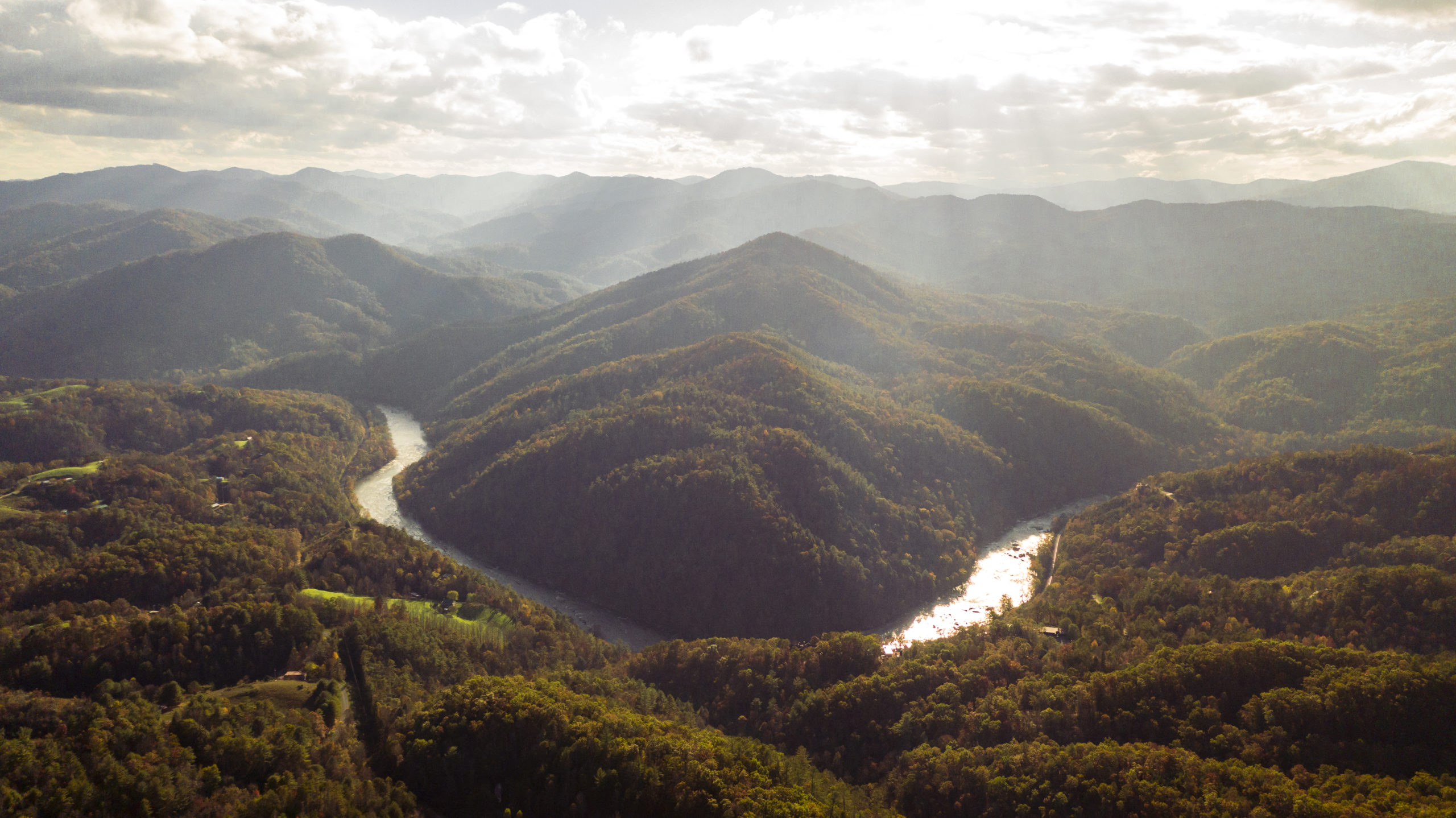
Giving Hemlocks Hope: French Broad Crossing’s Conservation Crusade
“What happened to the trees?” It’s a common question, especially from those enjoying the mountain views at nearby Blue Ridge Parkway overlooks. It’s easy to see what prompts such an inquiry. Among the Southern Appalachians are brown swaths of conifer trees that are visibly sick or dead. In earlier years, these were healthy, majestic Eastern hemlocks. These trees are commonly known as the “Redwoods of the East,” with some living for as much as 800 years. Being a critical part of the Pisgah National Forest ecosystem, a massive conservation effort is underway in the U.S. to help save the precious evergreens. In partnership with the Hemlock Restoration Initiative and the Southeast Regional Land Conservancy, our French Broad Crossing residents recently embraced a heroic crusade to protect a whopping 279 hemlocks from further blight.
What’s killing the hemlock trees?
It’s a shock to see hardy trees taken down by a tiny insect. Sadly, that’s what’s happening to the Eastern and Carolina hemlocks that grow so prolifically in our Appalachian forests. The pest, which is native to East Asia, is the Hemlock Woolly Adelgid. It was first discovered in the U.S. in the 1950s, and unfortunately, the hemlocks have no natural defense against the bugs. Less than one millimeter in size, these insects lay 50 to 300 eggs on hemlock tree branches. The eggs hatch, and the young bite into a hemlock needle base and suck out the sap. Tragically, the infested tree can’t get the water or nourishment it needs to survive. Hemlock ultimately succumbs to the Woolly Adelgids’ damage within four to 10 years.
Why are hemlocks a crucial part of the forest?
Hemlocks are unique in that they are the most shade-tolerant tree in the U.S. They thrive in cool, shady ravines or damp areas of deciduous forests. Its canopy creates a vital food, shelter, and habitat for over 90 species of birds (especially songbirds, woodpeckers, and birds of prey). The prolific shade that hemlocks provide along forest streams helps keep the water cool, helping trout better survive the summer months. When hemlocks die, there are no shade-tolerant trees to replace them. As a result, more sunlight penetrates the forest floor, raising soil, air, and stream temperatures, all of which negatively impacts crucial ecosystems in our mountain forests.
The French Broad Crossing hemlock rescue effort begins
As a Preserve Community, French Broad Crossing (FBC) heavily emphasizes the value in green space, quality of life, investment, and community. Land preservation and conservation are a top priority. Approximately one-third of FBC’s land (750+ acres) is held in trust by Southeast Regional Land Conservancy. Known as the Elbow Hollow Conservation Area, the easement is home to more native tree species than in all of Europe combined — Eastern hemlocks being one of them. In November of 2020, FBC resident naturalist, Jim Palmer, spearheaded an effort to save Elbow Hollow’s hemlocks. He worked closely with Karin Heiman (Biologist, Southeast Regional Land Conservancy) and Margot Wallston (Executive Director, Hemlock Restoration Initiative) to determine the best protection options. Together they walked the Elbow Hollow Conservation Area and took inventory of 145 hemlocks that would respond well to safe chemical treatment.
French Broad Crossing springs into action
With cost estimates in hand, Jim Palmer sprang into action. He reached out to the French Broad Crossing HOA board with a thoughtful yet strategic plan to help save a large portion of the community’s hemlocks. The initiative required $2000 for treatment. The HOA board approached Preserve Communities, and the developer happily (and quickly) funded the endeavor, and in early December of 2020, the crusade to save FBC’s hemlocks began. Representatives from Save the Hemlocks, along with several French Broad Crossing resident volunteers, spent two days protecting, not 145, but an astonishing 279 trees from the Hemlock Woolly Adelgid.
Volunteers gather at FBC’s River Lodge. Photo by Ben Chase.
While time will tell the true outcome of the effort, it was considered a great success. 279 of our hemlocks now have better hope for survival. What’s more, the French Broad Crossing community plans to continue the crusade to save more hemlocks in the future.
Do rewarding conservation endeavors like this sync well with your values? If you get as much gratification out of pristine, preserved lands as we do, you’re invited to discover the distinctive lifestyle that French Broad Crossing has to offer. Let’s schedule a safe tour of our exclusive conservation community today. You’ll be glad you did.
